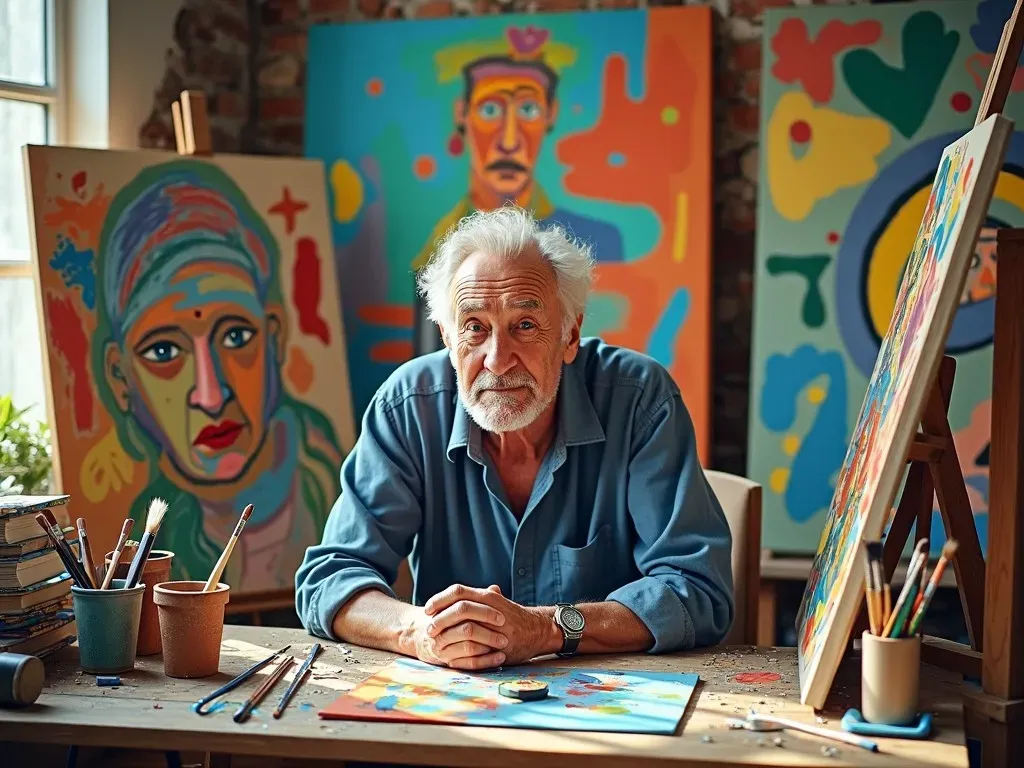The title of the famous painter with the longest name belongs to Pablo Ruiz Picasso. Born on October 25, 1881, in Málaga, Spain, he became one of the most influential artists of the 20th century. Known as the co-founder of Cubism and a master of various artistic Techniques, Picasso’s full name pays homage to various family members and saints, showcasing a tradition of long, intricate naming in his Spanish heritage.
The Intricate Name: What is in a Name?
Pablo Picasso’s complete name consists of an impressive 23 words:
Pablo Diego José Francisco de Paula Juan Nepomuceno Crispín Crispiniano de la Santísima Trinidad Ruiz Picasso.
This lengthy moniker is a blend of family heritage and religious references, marking a significant cultural practice in Spain, where it is customary to have multiple given names and surnames. Let’s break it down for better understanding:
Breakdown of Picasso’s Full Name
| Name Component | Meaning or Significance |
|---|---|
| Pablo | Given name, derived from Spanish, meaning “small” |
| Diego | Another given name, often associated with St. James |
| José | Common name in the Spanish-speaking world, linked to St. Joseph |
| Francisco | Name meaning "free man," often given in honor of St. Francis |
| de Paula | A reference to St. Paul |
| Juan | A common name in Spain, usually linked to St. John |
| Nepomuceno | In honor of St. John Nepomucene, a Czech saint |
| Crispín | After St. Crispin, the patron saint of shoemakers |
| Crispiniano | A derivative of Crispín |
| de la Santísima Trinidad | Literally translates to "of the most holy Trinity" |
| Ruiz | His father’s surname |
| Picasso | His mother’s surname |
This extensive list of names reflects a strong familial and religious commitment that was common in Spanish culture at the time.
Picasso’s Artistic Legacy
Pablo Picasso’s impact on art is monumental. Not only was he a prolific painter, but he also made significant contributions to sculpture, ceramics, and stage design. Below are some important milestones in Picasso’s artistic journey:
Key Milestones in Picasso’s Career
| Year | Achievement |
|---|---|
| 1900 | Moves to Paris, meets fellow artists |
| 1907 | Begins to develop Cubism with "Les Demoiselles d’Avignon" |
| 1937 | Creates "Guernica," a powerful anti-war painting |
| 1961 | Influences modern art and retains fame until his death |
Famous Works by Pablo Picasso
Throughout his career, Picasso produced an estimated 50,000 artworks, encompassing painting, sculpture, prints, and textiles. Here are a few of his most celebrated pieces:
| Title | Year | Style/Medium |
|---|---|---|
| Les Demoiselles d’Avignon | 1907 | Oil on Canvas |
| Guernica | 1937 | Oil on Canvas |
| The Weeping Woman | 1937 | Oil on Canvas |
| The Weeping Woman | 1937 | Oil on Canvas |
His artworks are not just confined to visual art; they also reflect the socio-political contexts of his time. For instance, "Guernica" serves as a powerful outcry against the brutality of war, drawn in response to the bombing of the town Guernica during the Spanish Civil War.
Other Famous Painters with Long Names
While Picasso holds the title for one of the longest names in the art world, several other Notable Artists also had lengthy names. Here are a few:
| Painter | Full Name |
|---|---|
| Salvador Dalí | Salvador Domingo Felipe Jacinto Dalí i Domènech |
| Willem de Kooning | Willem de Kooning |
| Giuseppe Arcimboldo | Giuseppe Arcimboldo |
| Michelangelo Buonarroti | Michelangelo di Lodovico Buonarroti |
Though these names might not reach the same length, they reflect a rich cultural history and artistic legacy.
The Impact of Name on Legacy
The cases of Picasso and these other artists raise interesting questions about how names can influence legacy. The storytelling embedded in a name can often enhance the mystique and allure surrounding an artist. For example, the complexity of Picasso’s name mirrors the complexity of the art he created.
FAQs About Pablo Picasso and His Name
Q1: Why does Picasso have such a long name?
A1: Picasso’s name is a reflection of Spanish naming conventions, where multiple names honor family and religious figures.
Q2: What is the most famous painting by Picasso?
A2: "Guernica" is often regarded as his most famous work, embodying his critique of war and violence.
Q3: Did Picasso paint in just one style?
A3: No, Picasso was versatile, exploring styles like Blue Period, Rose Period, and Cubism throughout his career.
Q4: How did Picasso influence modern art?
A4: He co-founded the Cubist movement, leading the way for modern artistic expressions and challenging conventional perspectives in art.
Q5: Are there other artists with long names?
A5: Yes, while Picasso is the most notable, there are other artists with lengthy names, often reflective of cultural naming practices.
Conclusion (Not to be included)
Pablo Picasso’s remarkable name serves as a fascinating entry point into understanding his equally remarkable life and contributions to art. Through his complex identity and expansive body of work, Picasso remains a towering figure in the art world, often remembered by more than just his works but also by the impressive legacy carried in his name.
For more insights into Picasso and other famous painters, you can visit Britannica.
